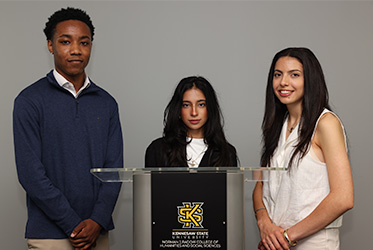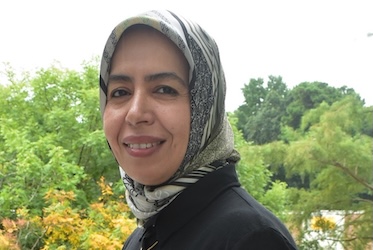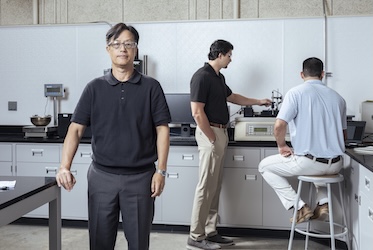

MARIETTA, Ga. | Nov 6, 2019
KSU students reimagine shelters for the homeless
Before enrolling at Kennesaw State University, architecture student Nicholas Halford spent his free time volunteering around Columbus, Ga., working to feed and shelter the local homeless population.
“That’s been something that has stuck with me ever since, and really opened my eyes to the broader issue of homelessness,” he said.
Guided by that experience, Halford was among the nearly two dozen students who participated in the Mad Houser Hi Hat Competition, an extracurricular event in which students across Kennesaw State’s two campuses formed teams to design and conceptualize structures which could be used by the homeless population in the greater Atlanta area. The competition, which opened in August, culminated this week with team presentations coinciding with the University’s Homelessness Awareness Week, a week-long experience dedicated to increasing awareness of homelessness in the local community and on college campuses.
Held by KSU’s Campus Awareness, Resource and Empowerment (CARE) Services program and the Department of Architecture in support of Mad Housers, an Atlanta-based nonprofit dedicated to providing shelter to the homeless, the competition challenged students across multiple disciplines to refine the design of a Mad Housers shelter, known as the Hi Hat. The Hi Hat is a simplistic and utilitarian structure designed to temporarily shelter the homeless and improve their quality of life.
The winning team, Hoot Hoot, was praised for its holistic approach to improving the Hi Hat by adding additional functionality within the proposed $300 to $500 building price range. The team’s shelter included a second floor with storage compartments tucked under the stairs, a rooftop garden and the option to include solar power.
“We also designed it so that it would be appealing enough that someone would want to live there,” said team captain Nelida Gallardo.
“It meant a lot for us to be able to contribute to the conversation through this project,” Gallardo said. “I know that if it can make an impact here, then it has the potential to help the homeless regardless of where they are in the world.”
Halford, whose team Community Corners focused on creating a network of modular units to build a sense of community, said the interdisciplinary approach to the competition provided perspectives he might not have otherwise encountered. In addition to architecture students, his team was composed of students pursuing degrees in mechanical engineering and English.
“I feel like I learned from each of the projects presented,” said Halford, whose team finished second. “To me, the biggest takeaway may have been hearing from the folks at Mad Housers the real-world implications each of the designs have and how it could help meet their goals. It was super helpful to hear from their experience on such a large subject.”
Ed Akins, an associate professor of architecture who helped coordinate the event, said each of the designs presented has the potential to be used by Mad Housers.
“Each one of the entries brought forth ideas that can certainly benefit the future development of huts,” he said. “Seeing them all together allows us to bring together some of that synergy. It helps us understand how these many different perspectives can bring insight into design and tackle an important issue.”
The following students received recognition at the conclusion of the competition:
First place: Hoot Hoot – Nelida Gallardo, integrative studies; Christine Vu, architecture; Steven Yang, architecture; and Stephen Kimble, construction management.
Second place: Community Corners – Nicholas Halford, architecture; Cameron Shaprio, architecture; Brendan Lydic, architecture; Justin Simes, architecture; Trevor Foster, mechanical engineering; and Daniela Vinueza, English.
—Travis Highfield
Photography by Jason Getz

Lawyers learning ethics lessons from AI mishaps, Kennesaw State speaker says

Debate team at Kennesaw State rising to the challenge

Kennesaw State professor awarded NSF grant to strengthen communication skills in engineering education

Kennesaw State faculty members honored by the American Society of Civil Engineers
A leader in innovative teaching and learning, Kennesaw State University offers undergraduate, graduate, and doctoral degrees to its more than 47,000 students. Kennesaw State is a member of the University System of Georgia with 11 academic colleges. The university’s vibrant campus culture, diverse population, strong global ties, and entrepreneurial spirit draw students from throughout the country and the world. Kennesaw State is a Carnegie-designated doctoral research institution (R2), placing it among an elite group of only 8 percent of U.S. colleges and universities with an R1 or R2 status. For more information, visit kennesaw.edu.